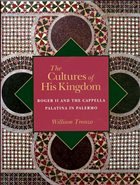The Capella Palatina in Palermo, one of the best known monuments of medieval Europe, dates from the construction of the palace in Sicily of Roger II, king of Sicily in the mid-twelfth century. This book proposes that this royal chapel preserves virtually intact--and uniquely so--an ensemble of architecture and the arts of the period, and it sets out systematically to investigate every major component of the decoration and furnishing of the chapel. It propounds a new chronology for the edifice, which fixes a new frame of reference for understanding how the chapel functioned under the Norman kings.
One of the major accomplishments of this book is to establish a plausible context for the appearance of Muslim elements in the chapel, like the great muqarnas ceiling of the nave. Rather than simply a quotation from a foreign culture for decorative purposes, the muqarnas ceiling was an integral part of a royal program that was devised under Roger II. For his successors, however, it was something of an embarrassment that needed to be manipulated. The change in emphasis summarizes the history of the Cappella Palatina: created as an exemplum of the great multicultural experiment of King Roger, it was reframed as a purely Christian edifice by subsequent generations in order to fit a concept of the "Western" cultural tradition, to which the protean island of Sicily itself has also been made to conform.
Review:
... This is the first monographic scholarly study in any language treating one of the most interesting and well-preserved medieval `ensembles'. (Choice)
Table of contents:
List of Illustrations
Abbreviations
Preface
1
The Ensemble: "... et ornamentis variis ditavit ..."
3
2
New Dates and Contexts for the Decorations and Furnishings of the Chapel
28
3
Proposals Regarding the Functional Rationale of the Chapel
97
4
On the Self-Sufficiency of the Image in King Roger's Sicily
134
Selected Bibliography
153
Index
166
Black-and-White Illustrations
171
One of the major accomplishments of this book is to establish a plausible context for the appearance of Muslim elements in the chapel, like the great muqarnas ceiling of the nave. Rather than simply a quotation from a foreign culture for decorative purposes, the muqarnas ceiling was an integral part of a royal program that was devised under Roger II. For his successors, however, it was something of an embarrassment that needed to be manipulated. The change in emphasis summarizes the history of the Cappella Palatina: created as an exemplum of the great multicultural experiment of King Roger, it was reframed as a purely Christian edifice by subsequent generations in order to fit a concept of the "Western" cultural tradition, to which the protean island of Sicily itself has also been made to conform.
Review:
... This is the first monographic scholarly study in any language treating one of the most interesting and well-preserved medieval `ensembles'. (Choice)
Table of contents:
List of Illustrations
Abbreviations
Preface
1
The Ensemble: "... et ornamentis variis ditavit ..."
2
New Dates and Contexts for the Decorations and Furnishings of the Chapel
3
Proposals Regarding the Functional Rationale of the Chapel
4
On the Self-Sufficiency of the Image in King Roger's Sicily
Selected Bibliography
Index
Black-and-White Illustrations
Es gelten unsere Allgemeinen Geschäftsbedingungen: www.buecher.de/agb
Impressum
www.buecher.de ist ein Internetauftritt der buecher.de internetstores GmbH
Geschäftsführung: Monica Sawhney | Roland Kölbl | Günter Hilger
Sitz der Gesellschaft: Batheyer Straße 115 - 117, 58099 Hagen
Postanschrift: Bürgermeister-Wegele-Str. 12, 86167 Augsburg
Amtsgericht Hagen HRB 13257
Steuernummer: 321/5800/1497

